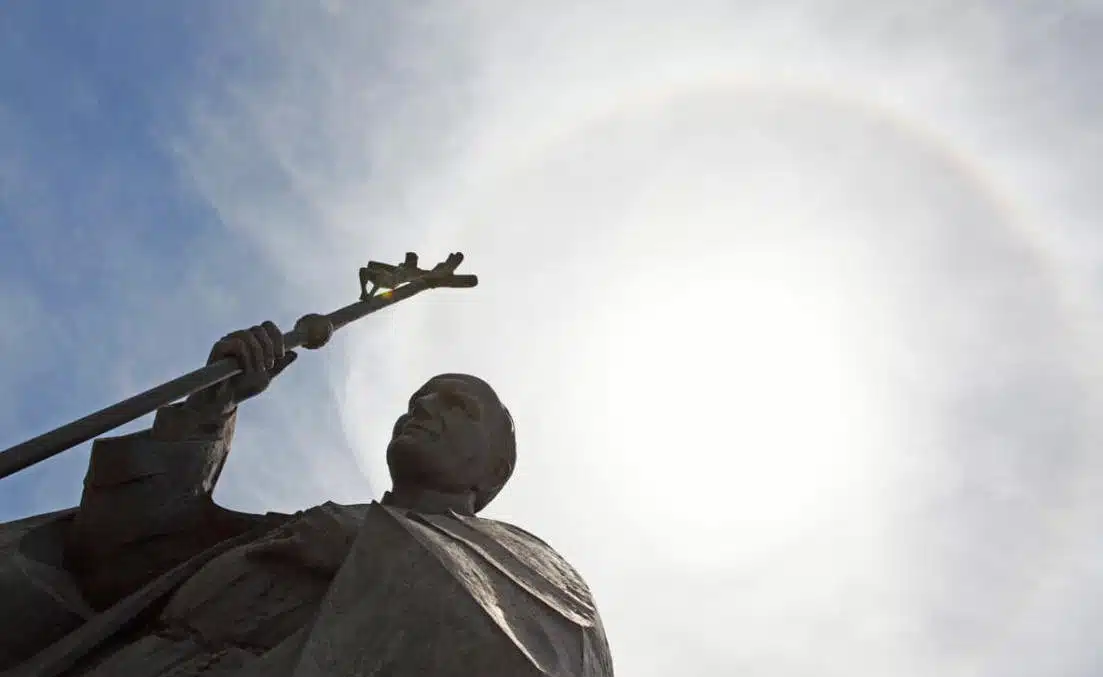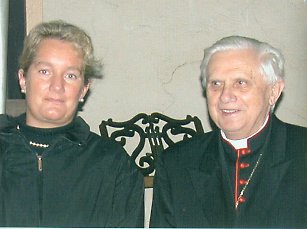Okay: did that long-ago saint named Malachy really predict future Popes—including the one who would be last?
And in accordance with that supposed prophecy, is the last one now gone, or upon us?
If that seems confused, it’s because it is, which is not always the best indicator in discernment.
The “Prophecy of the Popes” is a list, as many know, of 112 short Latin depictions or “mottoes,” supposedly predicting every Pope from Celestine II (1143) to the end of time. A few examples: As Catholic Answers points out, the description of the future John XXII (1316-1334) was supposedly “de sutore osseo”—from the bony shoemaker.” This Pontiff was the son of a shoemaker and his family name was “Ossa,” which means bone.
In another example, “lilium et rosa” was the phrase used to describe the Pope who would be Urban VIII (1623-1644), whose family coat-of-arms was covered with “lilies and roses.”
There are other examples, as you will see. At any rate, the list was first published in 1595 by Benedictine monk Arnold Wion, who attributed it to the 12th-century Irish archbishop, Saint Malachy, who hailed from Armagh.
Saint Bernard of Clairvaux, a contemporary biographer of Malachy who recorded the saint’s alleged miracles, made no mention of the prophecy.
Is it just a forgery composed around 1590 and meant to influence a specific papal conclave back then?
Again, Malachy lived in the 1100s. His prediction didn’t come to light for four centuries.
More suspiciously, the prophecy seems strikingly accurate for Popes up to its publication (again, in 1590)—but vague and inconsistent, if not plainly inaccurate, thereafter.
But there have been a few good matches in modern times, since 1590.
The phrase “pastor et nauta,” meaning “shepherd and sailor,” was attributed to John XXIII. This Pope hailed from Venice, historically a city of sailors, and on the day he took office he indicated the goal of his pontificate was to be “a good shepherd.”
Describing the Popes to follow John XXIII are the phrases “flower of flowers” (Paul VI, who had a fleur-de-lys in his coat of arms), “from the labor of the sun” (for John Paul II, with significance attached in the occurrence of solar eclipses elsewhere in the world on the date of his birth (18 May 1920) and funeral (8 April 2005) and whose mother reported a miracle of the sun around the time of his birth.
After John Paul II were only two left in Malachy’s prophecy (if you don’t count John Paul I): “the glory of the olive” and “Peter the Roman.”
The latter would supposedly lead the Church through many tribulations, concluding with the last judgment.
Was Benedict XVI (“glory of the olive”) represented as such because of his choice of papal name was after Saint Benedict of Nursia, founder of the Benedictine Order, of which the Olivetans (“Olivetan” comes from Monte Oliveto, or the Mount of Olives) are one branch?
The final purported motto from Saint Malachy—the final Pope—describes “Peter the Roman,” who would lead the Church through great tribulations before the destruction of Rome and the Last Judgment. However, the line preceding it—”In the final persecution of the Holy Roman Church, there will sit…”—is treated by some as a separate sentence, leaving open the possibility of unnamed popes between “Gloria olivae” (the 111th motto, often linked to Benedict XVI) and Peter the Roman.
Pope Francis, Benedict XVI’s successor, is not directly named in the prophecy. Some have tried to associate him with Peter the Roman due to symbolic links (e.g., Francis of Assisi’s father was named Pietro, and Francis is of Italian descent).
That seems a bit strained.
The prophecy does not clearly specify if he is the final Pope or if more will come. It basically just says the last will be a “Peter.”
Some interpretations leave room for one or more popes between Benedict XVI and Peter the Roman. Thus, under this widely held reading, Pope Francis is not Peter the Roman, and the final prophesied Pope is still to come.
In the imminent conclave are “frontrunners” such as Cardinal Pietro Parolin, Cardinal Peter Erdo, Cardinal Peter Turkson, and Cardinal Pierbattista Pizzaballa. (“Pier” is a form of “Peter”; his first name means “Peter the Baptist”).
But, again, this is only if Pope Francis—who was Pontiff for twelve years—is left out. Some lists also leave John Paul I out.
“Peter the Roman” will nourish the sheep in many tribulations, says the prophecy; afterward, the city of seven hills will be destroyed, and the dreadful judge will judge his people. “The end.”
+
[Footnote: Says a more recent alleged “prophet,” Manuela Strack of Sievernich, Germany (quoting Saint Michael), “Pray! Darkness oppresses the Church!” (He requests a continuous recitation of the Rosary on May 7 and May 8, asserts the seer.”]
+





